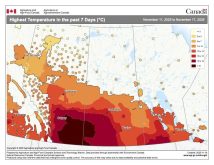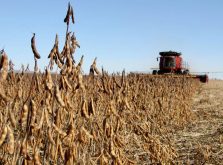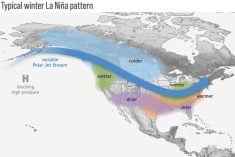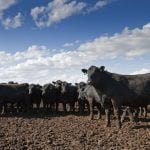In the Prairies, spring meltwater may give emerging crops a good start, but the finish is up to the rain.
“If you had your clay soils filled to their maximum water-holding capacity and then it doesn’t rain on them for the rest of the crop season, you’re going to have a crop failure,” said Paul Bullock, a retired soil scientist from the University of Manitoba. “Your crops are not going to be good at all. They will run out of water at some point.”
Why it matters: With a long stretch of heat already felt in the 2023 growing season, producers would have been grateful for any rain they got in early June.
Read Also

Manitoba to boost rural medical responders
Manitoba bursary aims for more accessible emergency medical responder training, better rural emergency health care.
Water is “the key ingredient when it comes to photosynthesis,” said Bullock. “You need carbon dioxide in the atmosphere along with soil water, and when you get those two together, the plants can make organic molecules. It’s at the base of the food chain.”
To phrase it as your science teacher probably did, photosynthesis breaks water and carbon dioxide into component parts. The plant then recombines those atoms into sugars, oxygen to be released and amino acids from using soil nutrients taken in by roots. These are the building materials needed to make tissue.
The process has been going on since the glaciers receded, leaving room for plants to populate the newly formed Great Plains.
The bluestems and spear grasses that colonized the region are masters at holding and conserving water. Their tillers gather rain, trickling moisture to the centre of the plant, where it percolates down through the soil and into the deep-root zone of these perennials.
Some domestic species, like wheat, rye and flax, come from semi-arid regions but, as annuals, still lean on supplemental rainfall. Because the next generation depends on those plants pouring everything into seed production, they produce minimal stem, leaves and roots.
“The fastest way to dry out the root zone of the soil is to put a plant in it, make it happy, make it healthy,” Bullock said. “Give it a good root and it will pump that soil dry way faster than if you leave it bare and expect it to evaporate dry.”
The other aspect is evapotranspiration, the plant’s evaporation-driven circulatory system. Plants take in carbon dioxide through the stomata, the openings in the leaves. As that happens, a certain amount of water vapour escapes from the plant’s vascular system. As water molecules leave, they pull the next ones in line closer to the stomata.
“It’s a pipeline, and a nutrient transfer system as well, pumping up through the stems and the leaves to supply the tissues in the plant with the nutrients that are required,” Bullock said. “There’s a tremendous amount of water taken up by the plants that ends up right back in the atmosphere as water vapour. In fact, in dryland farming, the majority of that water is just cycled right back to the atmosphere.”
Talking dirt
It all starts in the soil, with root tissues collecting water and feeding it into the main body for photosynthesis and evapotranspiration. How well the soil can receive and hold reserves of rainwater depends on the type.
“The main thing is the texture, the particle size and the particle size distribution,” Bullock said. “So, it’s the size of the particles themselves—whether they’re sands, silts or clays—and the mixes of them that impacts the amount of soil water storage that you get.”
Sand particles are the largest, followed by silt and then clay. The smaller the particle size, the better the soil is at holding water.
It’s the reason that rain falling on sandy soils, such as those in the Assiniboine Delta and along the old Lake Agassiz beach ridges, tends to trickle down the profile and drain quickly. The Portage la Prairie potato farmer knows the need for irrigation on those soils.
The Red River Valley sits at the other extreme, born of the clay that settled on the bed of Lake Agassiz.
“We do have our Red River and Osborne clays that are clay to heavy-clay textures,” Bullock said. “They are exceedingly level, not a lot of topography on them, hardly any stones … they can shrink and swell so they’re kind of dynamic.”
At the intermediate position are loamy soils, a combination of sand, silt and clay that is most common in the agricultural sections of the province. On example is the Newdale clay loam, Manitoba’s official soil.
“You find this more in the central part of the province on glacial till soils,” Bullock said. “So they’re not flat like the Red River Valley, they’re a little bit more rolling.”
There are also complex combinations like Almasippi soil in central Manitoba, a sandy soil sitting on top of a heavy clay layer.
“Their nickname is ‘the wet sands’ because rain in sandy soil infiltrates quickly and is lost below the root zone very quickly,” Bullock said. “But in the Almasippis, water that might be lost in the root zone doesn’t go very far. It sits on a perched water table over top of the clays.”
From there, water may flow laterally along the clay layer as it follows gravity to a lower point. It acts like an aquifer and may even provide ground water to other fields, where it settles and is lifted to the root zone through capillary action.
That type of action is an important non-rain source of soil moisture for agriculture, “especially like the year 2017 where you had a very, very wet year followed by a dry year,” Bullock said. “You can actually capture some of that water as groundwater from the year before.”















